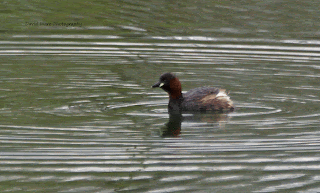The beaches on the north Norfolk coast are wide and largely empty, making them a perfect take-off and landing strip if you happen to have your own microlight. So it was for Peter Marcou, who I met at Brancaster. In exchange for some shots of him taking off and in flight, Peter kindly provided me with some shots of the coastal strip to illustrate my blog – mostly dunes and salt marsh and ideal for a variety of birds.
 |
| Brancaster - looking west |
 |
| Brancaster - looking east |
The second visit during our trip to north Norfolk was to Cley Marshes – the jewel of the Norfolk Wildlife Trust reserves. The weather continued to be warm and sunny, but the wind was a chill northerly straight off the sea.
Cley is a quite expansive reserve, and covers a range of different habitats – from salt and freshwater marsh, to large reed beds and grazing marsh. Some of the lagoons were a bit low on water because of the drought, and this had uncovered a number of additional mud banks. The reserve also has one of the best visitor centres I have come across – and the lunches weren’t bad either.
In the morning I visited to three main hides which afforded some good views across the main scrapes and pools. The birdlife was not as varied as I had hoped, but there were plenty of Avocet, Bar- and Black-Tailed Godwits, plus a few Ruff (still in winter garb) and plenty of ducks. The geese were limited to Greylags pairing up to raise new broods. The reed beds along the walkways were full of the calls of Bearded Tits (or Bearded Reedlings as they are called locally), but which made few appearances other than fleeting fly-overs or brief views through the reeds. Those views were the closest I had come to those birds, but it was quite frustrating that I still have no close up photos of them.
 |
| Kestrel atop Avocet hide |
After lunch I went to Bishop’s hide and was treated to some really good and close up views of Avocets, Black-Tailed Godwits and Ruff.
 |
| Squabbling Avocets |
 |
| Avocet with thoughts of food |
 |
| Black-Tailed Godwit |
 |
| Ruff |
 |
| Ruff |
 |
| Ruff |
<><><><>
Later I did the walk along East Bank from where I saw three distant Red Kites (quite rare for around Cley), and two high flying buzzards – thought by a local (and dubiously by me) to be of the Rough-Legged species. I did pick up one “lifer” however. I have twice heard a Cetti’s Warbler in East Yorkshire, but never seen one. Today I did both. Having heard the call a few times I stood and waited. My patience was rewarded with the briefest of sightings – too fast for a photo – before the bird dived back into a bramble, not to re-emerge. A quick study of my Collins confirmed what I had seen.
Not long after I spotted some commotion on the far side of the reserve with all the birds on the scrapes going up in unison. I scoured the sky for a predator, but none was to be seen. Then I noticed that sections of the reeds were being flattened, and only then did I see a herd of marauding red deer ploughing their way across the reserve. They reached East Bank, swam the ditch, climbed the bank and down the other side before galloping off across the grazing marsh and disappearing into the distance. What was driving them I do not know, but they certainly made everyone stop and stare – including a number of passing motorists.
 |
| Red Deer - climbing East Bank |
 |
| Off and into the distance having disturbed everyone |
The visit to Cley Marshes really concluded my trip to north Norfolk. Overall I had seen 60 different species, and found some really good places to visit for the future. I really enjoyed the wildlife, and am already planning a return trip for the end of the year when our winter migrants return.



















































